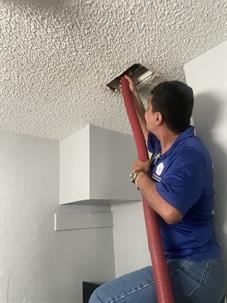Air conditioning units have become a staple in homes across the United States, providing comfort during the scorching summer months. However, the effectiveness of an air conditioning (AC) system relies not only on the unit itself but also on the essential accessories used during installation.
Importance of Proper AC Installation
Why Accessories Matter in AC Installation
Proper AC installation is crucial for the efficiency and longevity of your HVAC system. A well-installed system can prevent many problems, such as reduced airflow, increased energy consumption, and premature breakdowns. Accessories such as mounting brackets, surge protectors, and refrigerant lines contribute significantly to the overall performance of the installation. Each component works together to maintain optimal airflow, energy efficiency, and comfort levels in your home.
Overview of the Article
This guide will cover various aspects of AC installation, including planning and preparation, electrical components, mounting accessories, refrigeration components, drainage systems, ductwork, and miscellaneous accessories. We will explore the tools, brands, and practices to help you achieve a successful and efficient air conditioning installation.
1. Planning and Preparation
Proper planning and preparation are essential before starting the installation process. This step ensures you are well-equipped with the necessary tools and knowledge for an efficient installation.
Assessing Installation Site
Evaluating Room Size and AC Capacity
Before selecting an air conditioning unit, evaluate the room size to determine the appropriate BTU (British Thermal Unit) capacity required to cool the space effectively. Factors such as ceiling height, insulation quality, and sunlight exposure influence the cooling capacity needed.
Identifying the Best Location for Installation
Choosing the right location for installing your AC unit is critical. Ideally, it should be placed in a shaded area to enhance efficiency. Ensure enough space around the unit for proper ventilation and maintenance access.
Tools and Equipment Checklist
Essential Tools for Installation
Gather the following essential tools to ensure your installation goes smoothly:
- Screwdrivers (flathead and Phillips)
- Pipe wrenches
- Open-end wrenches
- Pliers
- Tape measure
- Level
- Drill
- Cordless drill
Safety Gear and Precautions
Do not overlook safety procedures and equipment. During installation, wear safety glasses, work gloves, and a dust mask to protect yourself from dust and debris.
2. Electrical Components
An efficient AC system requires a proper electrical setup to function effectively. Understanding the components involved is essential for a successful installation.
Electrical Wiring and Circuit Breakers
Importance of Proper Wiring
The electrical system for your HVAC setup typically includes a dedicated 240-volt circuit. Ensure that the wiring complies with local code requirements and suits the power specification of your AC unit.
Choosing the Right Circuit Breaker
Select a circuit breaker that matches your AC unit’s electrical needs. The circuit breaker should be able to handle the necessary load to avoid tripping or overheating.
Surge Protectors
Surge protectors are essential accessories for your HVAC system. They help protect your unit from power surges caused by lightning strikes, fluctuations in the power grid, or other electrical disturbances.
Protecting the AC Unit from Power Surges
Installing a surge protector specifically designed for HVAC systems helps maintain the integrity of the electrical components, increasing the overall lifespan of your unit and preventing costly repairs.
Selecting the Appropriate Surge Protector
When choosing a surge protector, consider products such as those provided by Momentum AC & Electric, which specializes in HVAC systems. Look for a surge protector with a high joule rating to ensure it can handle significant power surges.
Thermostat Options
Thermostats control the operation of your AC unit, ensuring the correct temperature is maintained.
Types of Thermostats: Manual, Programmable, Smart
- Manual Thermostats: Basic temperature control with no programming features.
- Programmable Thermostats: Allow users to set schedules for temperature changes, resulting in energy savings.
- Smart Thermostats: Offer remote control through smartphone apps, enabling users to adjust settings from anywhere.
Choosing the Best Thermostat for Your AC
Invest in a thermostat that suits your lifestyle and provides features that enhance efficiency. Smart thermostats, like those available from Momentum AC & Electric, make managing your home’s temperature more accessible and energy-efficient.
3. Mounting and Support Accessories
Properly securing your AC unit is paramount for its functionality and safety.
Mounting Brackets and Frames
Selecting the Right Brackets for Different AC Types
Different air conditioning units require specific types of mounting brackets. For window units, brands such as Frost King provide durable and robust options that adequately support the unit’s weight.
Installation Tips for Wall-Mounted Units
Ensure the bracket is level and securely fastened to prevent the AC unit from tipping or vibrating excessively during operation.
Vibration Pads and Anti-Vibration Mounts
Importance of Reducing Vibration and Noise
Vibration pads help dampen noise and enhance comfort levels by isolating vibrations produced by the AC unit.
Best Practices for Installation
When installing your AC unit, place vibration pads beneath it to prevent noise transfer to surrounding structures.
AC Stands and Outdoor Unit Platforms
Ensuring the Stability of Outdoor Units
Outdoor AC units require a stable base to function effectively. Specialized stands or platforms are necessary to lift the unit off the ground and prevent water accumulation.
Material Options for Platforms
Platforms made of durable materials such as steel or heavy-duty plastic can withstand various environmental conditions while maintaining stability.
4. Refrigeration Components
These components are vital in transporting refrigerant and cooling the air.
Copper Pipes and Tubing
Importance of Quality Copper Pipes
Copper tubing is often used in HVAC systems for refrigerant lines due to its excellent heat conduction properties, corrosion resistance, and durability.
Sizing and Insulation Tips
Ensure you choose the correct diameter for the copper tubing to maximize efficiency. Insulate the pipes appropriately to prevent energy loss through thermal transfer.
Insulation Materials
Types of Insulation for Copper Pipes
When choosing insulation, consider products with low water vapour transmission (WVT) properties, moisture resistance, and temperature tolerance. Common materials include closed-cell foam and elastomeric insulation.
Best Practices for Insulation Installation
Ensure tight seams and complete coverage around the copper pipes to maximize the insulation’s efficiency and longevity.
Refrigerant Line Sets
Overview of Line Set Components
Refrigerant line sets include two copper pipes—a suction line and a liquid line—needed for transporting refrigerant between the indoor and outdoor units.
Choosing the Right Line Set for Your AC
Select a line set that matches your AC unit’s specific requirements and ensure it is appropriately insulated to prevent energy loss.
5. Drainage System
Proper drainage is essential to avoid water damage and ensure efficient operation.
Drain Pipes and Hoses
Ensuring Proper Condensate Drainage
Drain pipes, typically made from PVC, are crucial for guiding condensate away from the AC unit to prevent water buildup.
Material and Sizing Options
Choose the correct diameter and material for your drain pipes to ensure adequate drainage and prevent clogging.
Drainage Pumps
When and Why to Use a Drainage Pump
Drainage pumps are helpful if the AC system is located below the drainage point or when gravity drainage is inadequate.
Selecting the Right Pump for Your System
Opt for pumps with sufficient horsepower and flow rate for your system’s drainage requirements. Models from Momentum AC & Electric can offer reliable options.
Condensate Drain Pans
Preventing Water Damage with Drain Pans
Drain pans collect excess water that may leak from the AC unit, protecting your floors from water damage.
Choosing the Right Pan for Your Installation
Select an appropriately sized drain pan for your AC unit and ensure it is made from corrosion-resistant materials.
6. Ductwork and Ventilation
Effective ductwork design is crucial for proper airflow and comfort.
Ductwork Design and Materials
Types of Ducts: Rigid, Flexible, Sheet Metal
- Rigid Ducts: Made from steel or aluminium, known for durability.
- Flexible Ducts: Simplifies the installation process in complex areas.
- Sheet Metal Ducts: Often used for commercial installations due to their robustness.
Best Practices for Duct Installation
Ensure correct sizing, sealing, and insulating ducts to maximize energy efficiency and comfort.
Duct Insulation and Sealing
Importance of Insulating Ducts
Proper insulation minimizes energy loss and prevents condensation that can lead to mould growth.
Techniques for Proper Sealing
Use mastic sealants or duct tape to seal all duct joints adequately.
Ventilation Grilles and Diffusers
Choosing the Right Grilles and Diffusers
Select grilles and diffusers that facilitate adequate airflow while complementing your home’s interior design.
Placement Tips for Optimal Airflow
Ensure supply and return vents are adequately positioned to promote balanced air distribution throughout your home.
7. Miscellaneous Accessories
Remote Controls and Wi-Fi Modules
Enhancing Convenience with Remote Controls
Remote controls provide added convenience for adjusting settings without needing to be near the unit.
Benefits of Wi-Fi-Enabled AC Systems
Wi-Fi-enabled systems allow homeowners to control their AC settings remotely, providing flexibility and efficiency.
Filters and Air Purification Systems
Types of Filters: HEPA, Carbon, Electrostatic
Investing in quality air filters improves indoor air quality and maximizes system efficiency.
Integrating Air Purifiers with Your AC System
Consider using air purifiers alongside your air conditioning system for enhanced air quality.
Insulation Tape and Sealants
Importance of Sealing Joints and Connections
Sealants and insulation tapes are critical in preventing air leaks, improving system efficiency, and maintaining indoor air quality.
Choosing the Right Products for the Job
Select high-quality sealants and tapes designed for HVAC applications to ensure performance and longevity.
Conclusion
Recap of Essential Accessories
In this guide, we have discussed the vital accessories required for AC installation, covering every aspect from planning and preparation to ductwork and miscellaneous accessories. Brands like Momentum AC & Electric ensure you have access to quality components for your HVAC installation.
Importance of Proper Installation for Longevity and Efficiency
Investing time and resources in the right accessories and a complete installation process is critical to ensuring your AC system operates efficiently and has a long lifespan.
Final Thoughts on Selecting the Right Accessories
Whether you’re a DIY enthusiast or hiring a professional technician, the right accessories can significantly enhance your AC installation. Don’t compromise on quality; consult with experts to ensure you choose the best solutions for your cooling needs.
FAQs
What happens if I skip essential accessories during installation?
Skipping essential accessories can lead to suboptimal performance, energy inefficiency, and an increased likelihood of costly repairs.
Can I install the AC unit myself, or should I hire a professional?
While DIY installation is possible, hiring a professional is advisable due to the complexities involved and local codes and regulations.
How do I know if I need a surge protector for my AC unit?
A surge protector is highly recommended if you experience frequent power fluctuations or live in an area prone to thunderstorms.
What are the most common mistakes in AC installation?
Common mistakes include:
- Improper sizing.
- Inadequate duct sealing.
- Neglecting to follow electrical requirements.
- Failing to use the right accessories.
How often should I replace the filters in my AC system?
Depending on usage, filters should be replaced every 1-3 months to maintain optimal air quality and system performance.

